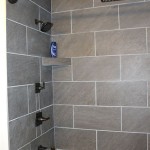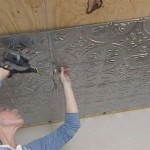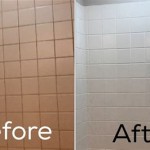Can You Tile Over Asbestos Linoleum Flooring in Georgia?
The question of whether one can tile over asbestos-containing linoleum flooring in Georgia is a complex one, fraught with potential health hazards and legal considerations. Asbestos, a naturally occurring mineral fiber, was widely used in building materials, including linoleum flooring, due to its heat resistance, durability, and affordability. However, it was later discovered to be a potent carcinogen, linked to serious respiratory illnesses, including mesothelioma, lung cancer, and asbestosis. Consequently, disturbing asbestos-containing materials (ACMs) can release harmful fibers into the air, posing a significant health risk. While Georgia does not have its own state-specific Occupational Safety and Health Administration (OSHA), it follows federal guidelines established by OSHA and the Environmental Protection Agency (EPA) regarding asbestos handling and removal.
When considering tiling over existing linoleum flooring, homeowners and contractors must carefully assess the risks associated with potentially disturbing asbestos-containing materials. Generally, tiling directly over undamaged asbestos linoleum is often considered a safer alternative to removal, provided the existing flooring is in good condition and the tiling process is executed with specific precautions. However, the decision is not without its considerations, and a thorough understanding of the potential risks and regulations is paramount.
Identifying Asbestos Linoleum Flooring
The first and most critical step is to determine whether the existing linoleum flooring actually contains asbestos. Visual identification is unreliable, as many types of flooring resemble asbestos-containing linoleum. The only definitive way to confirm the presence of asbestos is through laboratory testing. A sample of the flooring material must be collected and analyzed by a certified asbestos testing laboratory. These laboratories are equipped to identify asbestos fibers using specialized microscopic techniques.
In Georgia, property owners have a legal obligation to identify asbestos-containing materials before undertaking any renovation or demolition work that could disturb them. Failure to do so can result in substantial fines and potential legal liabilities. If the building was constructed before the 1980s, the likelihood of asbestos-containing flooring is higher. However, regardless of the building's age, testing is essential to provide definitive proof of its presence (or absence).
It is crucial to employ a qualified and licensed asbestos inspector to collect the sample. They are trained to take representative samples while minimizing the release of asbestos fibers. The inspector will also prepare a detailed report outlining the location, condition, and type of asbestos-containing materials identified.
Risks of Disturbing Asbestos During Tiling
Even when tiling over asbestos linoleum flooring, there is a risk of disturbing the material and releasing asbestos fibers. Any activity that involves cutting, drilling, sanding, or breaking the existing flooring can liberate these harmful fibers into the air. This poses a significant health hazard to anyone in the vicinity, including the installer and residents of the property.
The EPA and OSHA have established strict regulations to protect workers and the public from asbestos exposure. These regulations include permissible exposure limits (PELs), which specify the maximum concentration of asbestos fibers allowed in the air. When working with asbestos-containing materials, it is essential to adhere to these regulations to minimize the risk of exposure. This may involve wearing appropriate personal protective equipment (PPE), such as respirators and disposable clothing, and using specialized dust control measures, such as wet methods and HEPA-filtered vacuums.
Homeowners considering a DIY tiling project should be particularly cautious. Without proper training and equipment, they may inadvertently disturb the asbestos material and put themselves and their families at risk. Engaging a professional contractor experienced in working with asbestos-containing materials is highly recommended to ensure the work is carried out safely and in compliance with all applicable regulations.
Precautions for Tiling Over Asbestos Linoleum
If the asbestos testing confirms the presence of asbestos, and the decision is made to tile over the existing flooring, several precautions are necessary to minimize the risk of fiber release. The following measures should be implemented:
Assessment of Existing Flooring Condition: The existing linoleum flooring must be in good condition before tiling over it. If the flooring is significantly damaged, crumbling, or has loose sections, it is not suitable for tiling over. Damaged flooring is more likely to release asbestos fibers during the tiling process.
Surface Preparation: Thoroughly clean the existing linoleum to ensure proper adhesion of the new tile. This may involve using a mild detergent and water to remove any dirt, grease, or debris. Avoid sanding or scraping the surface, as this can release asbestos fibers.
Using a Bonding Agent: Apply a high-quality bonding agent specifically designed for tiling over non-porous surfaces. This will help ensure a strong bond between the existing linoleum and the new tile. Follow the manufacturer's instructions carefully when applying the bonding agent.
Employing Dust Control Measures: Use wet methods during the tiling process, such as dampening the linoleum before cutting or drilling. This will help to suppress the release of asbestos fibers. Use a HEPA-filtered vacuum to clean up any dust or debris. Avoid sweeping, as this can stir up asbestos fibers.
Sealing the Perimeter: After the new tile is installed, seal the perimeter of the room with a flexible sealant. This will help to prevent any asbestos fibers from escaping from under the tile. Ensure proper ventilation during the installation process.
Waste Disposal: Dispose of any waste materials, such as cut tile pieces or damaged linoleum, in accordance with local regulations for asbestos-containing materials. Double-bag the waste in heavy-duty plastic bags and label them clearly as containing asbestos. Contact your local waste management authority for guidance on proper disposal procedures.
Professional Installation Considerations: Even with these precautions, hiring a professional contractor experienced in working with asbestos-containing materials is highly recommended. They have the training, equipment, and knowledge to complete the project safely and in compliance with all applicable regulations. They will also be able to assess the condition of the existing flooring and advise you on the best course of action. Reputable contractors will be licensed and insured, providing added protection for the property owner.
Furthermore, proper documentation is essential. Maintain records of all asbestos testing results, inspection reports, and contractor agreements. This documentation can be valuable in the event of future renovations or property sales.
In conclusion, tiling over asbestos linoleum flooring in Georgia can be a viable option in certain circumstances, provided stringent precautions are taken. However, it is crucial to prioritize safety and compliance with all applicable regulations. Testing to confirm the presence of asbestos, assessing the condition of the existing flooring, and employing appropriate dust control measures are essential steps. While seemingly more convenient than removal, it is important to weigh the long-term risks and benefits carefully. Engaging qualified professionals is often the safest and most prudent approach to ensure the project is completed without jeopardizing the health and safety of occupants.

Can I Put A New Floor Over Asbestos Tiles Branch Environmental

Asbestos In Flooring Mesothelioma

Why Remove Vinyl Asbestos Tile Encapsulate Safer And Er Duraamen

Asbestos Tiles Brands Uses Exposure

Why Remove Vinyl Asbestos Tile Encapsulate Safer And Er Duraamen

Asbestos Tile Removal In Atlanta Georgia Es America

A Home And Asbestos What Are The Risks

Why Remove Vinyl Asbestos Tile Encapsulate Safer And Er Duraamen

Vinyl Asbestos Tile Vat Removal Rfci Supervisor Initial Refresher 4 Hr

What Does Asbestos Tile Look Like Removal Pro
Related Posts







